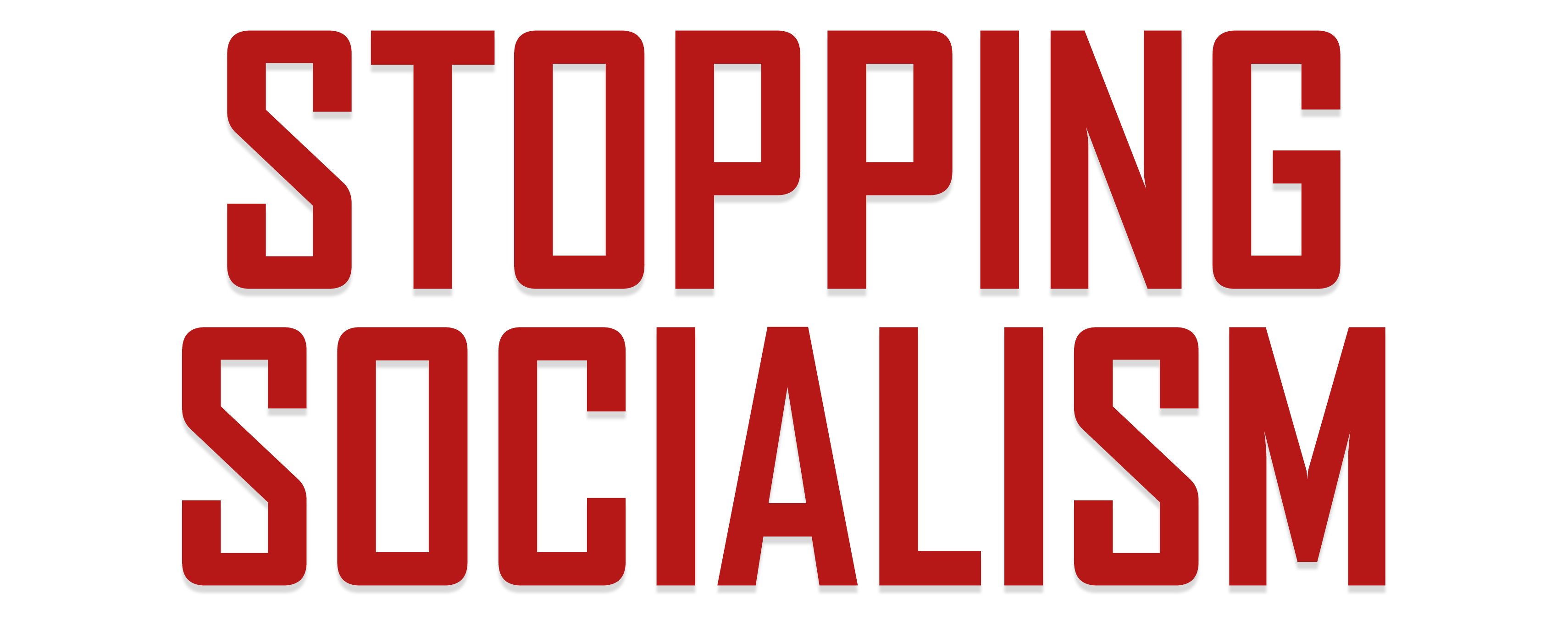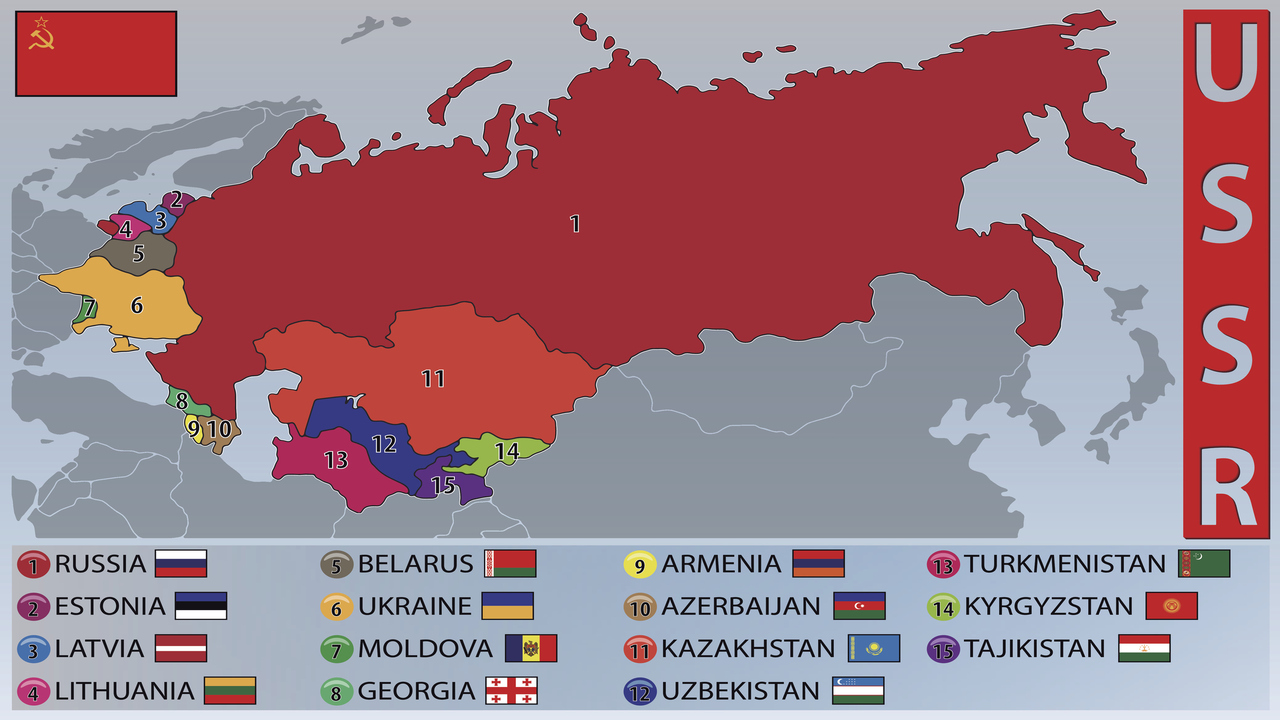From 1917 to 1923, Russia was embroiled in a long and bloody civil war known as the Bolshevik Revolution, from which the communist Bolsheviks emerged victorious under the leadership of Vladimir Lenin and other leading communist figures such as Joseph Stalin and Leon Trotsky. They renamed Russia the Soviet Union, and created the first—and perhaps most notorious—countrywide socialist system in world history.
Vladimir Lenin (1922-1924)
Vladimir Lenin was the first leader of the Soviet Union, and though his reign was short-lived due to his death in 1924, his impact was lasting. In fact, the ideology of the Soviet Union—and of many future socialist countries such as China, Cuba, and others—is often referred to as “Marxism-Leninism.”
Lenin’s goals centered around creating a worker-led society. He wanted to end capitalism and establish a socialist system where the workers controlled the means of production. Lenin once stated, “Democracy for an insignificant minority, democracy for the rich, that is the democracy of capitalist society.” His ultimate goal was to replace this capitalist system with a centrally planned socialist state that would coerce societal equity by substituting private ownership with public ownership, where profits would benefit “the collective.” Democracy had no place in such a system. In his book The State and Revolution, Lenin stated, “The dictatorship of the proletariat, i.e., the organization of the vanguard of the oppressed as the ruling class for the purpose of suppressing the oppressors, cannot result merely in an expansion of democracy.”
To achieve his vision, Lenin’s policies involved six primary themes.
- Centralized economic planning: Lenin implemented a system of central economic planning that involved strict state control over the economy, with production quotas and centralized distribution of resources.
- Wealth redistribution: Lenin sought to reduce income inequality and create a more egalitarian society by introducing progressive taxation on the rich and the introduction of a state welfare system to aid the less privileged.
- Nationalization of industry: Lenin believed in the socialization of the means of production, which involved nationalizing all large-scale industries such as banks, factories, and railways.
- Workers’ control over production: Lenin supported the idea of putting workers in charge of production; to do this, he established workers’ councils (known as soviets), which were intended to serve as the foundation of socialist society.
- Land reforms: Lenin advocated for nationalizing land ownership in order to redistribute land from the Russian aristocracy and bourgeoisie to the peasants, thereby creating a more equitable distribution of agricultural resources
- International socialism: One of the core tenets of Lenin’s ideology was the international spread of socialism, which involved supporting revolutionary movements in other countries. Lenin ultimately saw the Soviet Union as simply the starting point for a worldwide proletarian revolution that would lead to the downfall of capitalism and the rise of a communist “utopia.”
Though some of Lenin’s goals might seem admirable on the surface, the implementation of many of these policies resulted in severe economic hardships and political repression.
Economically, Lenin’s policies resulted in significant inefficiencies and a decline in agricultural production due to the fact that peasants had no idea how to till the land that was formerly owned by skilled farmers. Moreover, the lack of free market mechanisms led to shortages, hoarding of resources, and a severe decline in living standards.
Socio-politically, Lenin’s policies had even more drastic effects. Though workers were supposed to be empowered, that power was eventually subsumed by that of the Communist Party of the Soviet Union (CPSU), which made all substantive economic decisions. Moreover, Lenin’s regime abetted extreme political repression; the Bolsheviks sought absolute political power and used every means at their disposal to suppress political opposition. The establishment of the Cheka, the Soviet secret police, led to the repression of counter-revolutionary activities and dissent. Lenin’s government used harsh measures, including censorship, torture, imprisonment, and mass executions, to maintain control and suppress perceived threats to the socialist revolution.
In addition, civil liberties such as freedom of speech, press, and assembly were eliminated in order to prevent the spread of anti-revolutionary ideas, which was deemed necessary to protect the communist revolution from counter-revolutionary forces.
The effects of Lenin’s policies laid the groundwork for further consolidation of power under Lenin’s successor, Joseph Stalin, who expanded political repression and instituted more destructive economic policies.
Joseph Stalin (1924-1953)
Lenin’s death in 1924 created an internal power struggle, primarily between Joseph Stalin and Leon Trotsky. Stalin emerged as the leader of this struggle, with Trotsky exiled and eventually assassinated in Mexico City by the Soviet secret police under Stalin’s orders.
Stalin’s vision was largely similar to Lenin’s, though it diverged from Marxism-Leninism on the principle of “socialism in one country” rather than the international spread of communism. Stalin believed it was necessary for the Soviet Union to focus first on building and consolidating its own power rather than attempting to project that power onto the rest of the world. To turn the Soviet Union into a global superpower, he implemented even harsher political, economic, and social reforms than Lenin.
Politically, Stalin relied heavily upon systematic purges of Communist Party members as well as any and all perceived enemies, censoring all opposing points of view, and creating a personality cult with himself at its head. This led to the creation of a totalitarian state with Stalin controlling nearly every aspect of Soviet society. Stalin’s regime was generally marked by widespread repression and terror, with purges, forced labor, and mass executions used to maintain maximum control. During the “Great Terror” of 1936 to 1938, Stalin personally ordered the execution of approximately one million people, with as many as five times that number sent to Soviet gulags, most of whom did not return.
Soviet academic Andrei Sakharov estimated that more than 1.2 million party members—more than half of the Communist Party at the time—were arrested between 1936 and 1939, with approximately half of these dying by torture, execution, or forced labor. Other estimates suggest that one to two million Soviets were killed due to forced labor in the gulags throughout the entirety of Stalin’s reign, though there is considerable evidence suggesting this is a low estimate, as gulags often released prisoners who were close to death in order to artificially deflate mortality statistics. Stalin’s forced deportations of certain ethnic groups to inhospitable regions of the Soviet Union such as Siberia also led to a multitude of deaths, which many believe to be as high as one million.
Stalin’s socioeconomic policies were defined by the implementation of “five-year plans,” which sought to centrally control every aspect of supply and demand. These plans focused on rapid industrialization and the collectivization of agriculture, with the state setting production goals, controlling prices, and owning all aspects of industry. Though Stalin’s policies did lead to significant industrial growth initially, they came at an enormous cost, especially in the agricultural sector, in which production declined by as much as 25 percent.
Millions died due to the forced collectivization of agriculture and the widespread famines that resulted, especially during the famines of 1930 to 1933. Evidence shows that six to 10 million Soviet citizens perished during these famines, with the most infamous example being the Holodomor—roughly translated as “death by hunger”—in Ukraine. Ukrainian peasants—labeled “kulaks” or resistors by Stalin’s regime—had attempted to resist Stalin’s forced collectivization policies. Stalin responded by punishing Ukrainian farmers for not reaching quotas by taking their crops and killing or deporting tens of thousands. Estimates of the death toll from the Holodomor alone range from three to eight million, with Stalin himself claiming that he killed 10 million Ukrainians during a conversation with Winston Churchill in 1942.
Though very difficult to precisely quantify, Stalin is thought to be responsible for anywhere between 10 and 20 million deaths, and this number does not even include the tens of millions of Soviets who died during World War II. Some even estimate that the death toll under Stalin was as high as 60 million.
Nikita Khrushchev (1953-1964)
Joseph Stalin suddenly died of a stroke in 1953, setting off an internal power struggle between Georgy Malenkov, Lavrentiy Beria—whom many believe poisoned Stalin—and Nikita Khrushchev. After a brief period of instability in which Malenkov was forced into retirement and Beria was executed, Khrushchev became the paramount leader of the Soviet Union. He quickly sought to distance himself from Stalin, embarking upon a policy of “de-Stalinization,” which ushered in an era known as the “Khrushchev Thaw.” The Thaw incorporated a more collective form of governance, released political prisoners, allowed for limited individual freedoms and artistic expression, and withdrew some of the more significant forms of political repression.
Still, these changes were all made within the framework of the one-party communist state, with all power vested within the CPSU. And, Khrushchev was no less committed to Marxism-Leninism and communist principles than his predecessors.
For instance, Khrushchev heavily focused on reforming the Soviet agricultural sector, with the pain from the famines of the Stalin era still being felt. His Virgin Lands campaign forced many Russian peasants to resettle in the vast, uncultivated areas in the sparsely populated northern and eastern parts of the Soviet Union. Though the campaign did have some initial success, the newly christened “farmers” soon found that the poor soil quality in these regions was not conducive to agricultural production. The peasantry—with little to no experience in farming, and almost no technology to help them—were doomed to fail from the beginning. In a free market economy, such a scenario would never have occurred, as businesses and individuals would have had both the expertise and the incentive to either reject the endeavor entirely, or develop a creative solution.
Khrushchev also oversaw the construction of millions of standardized, prefabricated apartments, known as Khrushchyovkas. This was done in response to the growing housing crisis afflicting the country in the aftermath of World War II, which devastated many of the Soviet Union’s major metropolitan areas like Leningrad—modern-day Saint Petersburg, the second largest city in Russia. These new domiciles were drab and gigantic in size, reflecting the socialist principle that the individual is subservient to the collective. These were constructed by fiat, rather than any free market force. Moreover, with all homes sharing equal characteristics, it reinforced the concept that working harder would not result in any material benefit.
Khrushchev also devoted considerable attention to reforming the Soviet education system, making secondary education compulsory and freely available for all Russian children. Similar to the attempted housing reform, when something is offered completely free and equitably distributed, there is little incentive to work harder to attain a better education for one’s children. Moreover, this simply expanded the system of Soviet indoctrination; children were not taught to critically think or to entertain differing perspectives. Instead, they were taught to idealize Marxism-Leninism and revile free market capitalism at every juncture, shaping their attitudes for the rest of their lives.
Khrushchev did attempt to decentralize control over industry in order to stimulate economic growth by introducing Regional Economic Councils. These Councils were intended to more adequately align production with local consumption needs. However, even though they were decentralized from Moscow, they were still tightly regulated at the local level. Further, the sharp left turn from top-down national planning to local planning led to significant disorganization and was met with resistance from CPSU elites.
Finally, Khrushchev reformed the science sector, primarily to keep up with the rapid increases in technology emanating from the United States. He focused most heavily upon the space and arms races with the United States, pouring the vast majority of Soviet resources into these technological sectors at the expense of the rest of the economy. Though this did lead to the Soviets being the first country to successfully launch a satellite and a human being into space, the blind focus upon competing with America—a vastly more prosperous nation—permanently hamstrung Soviet economic development.
Khrushchev clearly adhered to socialist ideology. However, his allowance of increased societal freedom and his perceived weakness on the international stage—especially following his handling of the Cuban Missile Crisis in 1963, which nearly led to global nuclear annihilation—worried CPSU hard-liners. He was deposed in a bloodless coup in 1964 by a cabal of the most powerful of these hard-liners.
Leonid Brezhnev (1964-1982)
Leonid Brezhnev was one of the coup’s orchestrators. Though a handful of top CPSU leaders attempted to govern the Soviet Union collectively after Khrushchev’s downfall—including Soviet luminaries such as Alexei Kosygin, Nikolai Podgorny, and Mikhail Suslov—Brezhnev eventually emerged as the next leader of the Soviet Union.
Brezhnev’s socialist goals were embedded in the larger framework of his agenda, often characterized as the “Brezhnev Doctrine,” which aimed to uphold and expand the USSR’s socialist state while managing domestic and international tensions. He sought to maintain and improve the Soviet socialist system through socioeconomic development, political consolidation, expansion of socialist influence, and military-industrial prowess.
Brezhnev came to power in a period of significant economic stagnation and sociopolitical upheaval. His economic objectives were oriented towards enhancing the socialist command economy and improving living standards. The Eighth Five-Year Plan (1966 to 1970) and subsequent plans prioritized the production of consumer goods, but this goal was often eclipsed by heavy industry and military production. One of Brezhnev’s primary goals was the intensification of industrial and agricultural development. The 1970s saw extensive investment in massive projects, including the Baikal-Amur Mainline railway and the revitalization of Khrushchev’s Virgin Lands Campaign to increase agricultural output. However, Brezhnev saw similarly ineffective results as his predecessor, with inefficiencies, corruption, and a general lack of incentive continuing the period of economic stagnation and the general decline in living standards for the vast majority of the Russian people.
As alluded to, Brezhnev sought to consolidate his power after the 1964 coup, and subsequently used that power to strengthen CPSU control over Soviet society. He suppressed all forms of political dissent, as seen in the imprisonment of Soviet dissidents and the increased power of the KGB, the state’s security agency that Khrushchev spawned in 1964. The CPSU became a significant component of the country’s institutional fabric under Brezhnev’s rule as membership increased dramatically. The 1977 Constitution, often called the Brezhnev Constitution, reinforced the leading role of the CPSU and more firmly entrenched the socialist system in the country’s framework.
Brezhnev was perhaps the most foreign policy-oriented Soviet leader, and focused heavily on expanding Soviet influence and socialist ideology across the globe. This policy justified intervention in socialist states threatened by counter-revolution, which was applied in the Prague Spring in 1968 and the invasion of Afghanistan in 1979. While the Brezhnev Doctrine demonstrated Soviet dominance, it led to international isolation and drained the country’s economic resources. Brezhnev greatly expanded the military-industrial complex to safeguard the Soviet socialist state and its satellite interests. Massive spending on the arms race with the United States resulted in impressive military power but further weakened the economy. Generally speaking, Brezhnev sublimated the needs of his people to the expansion of the Soviet sphere of influence.
Though it was under Brezhnev’s tenure that the Soviet Union enjoyed its most powerful position on the international stage, his socialist economic policies and his blind focus on military superiority galvanized the slow decline of the Soviet Union, which culminated in its eventual dissolution in 1991.
Twilight Years: Andropov, Chernenko, and Gorbachev (1982-1991)
After Brezhnev’s death in 1982, he was succeeded by two largely forgettable Soviet leaders: Yuri Andropov and Konstantin Chernenko. Both only ruled for approximately one year, with Andropov dying in 1984 and his replacement Chernenko dying in 1985. The concurrent deaths of these men paved the way for the relatively young and liberal-minded Mikhail Gorbachev to take the reins. Gorbachev instituted radical political, economic, and social reforms with his policies of perestroika and glasnost, attempting to democratize the sociopolitical system and change the socialist command economy into a more market-oriented economy nearly overnight.
The damage, however, had already been done. Due to a confluence of factors, including economic collapse, popular discontent, and a “parade of sovereignties” from most Soviet satellite states, the Soviet Union began to disintegrate in the late 1980s. CPSU hardliners staged a coup in 1991 in an attempt to return the Soviet Union to its Marxist-Leninist principles. This proved to be the death knell of the Soviet Union. The increasingly popular leader of the Russian Soviet, Boris Yeltsin, took this opportunity to seize power for himself. Gorbachev officially resigned as president of the Soviet Union on Christmas Day of 1991, and the Russian Federation was born, with Yeltsin at its head.
Jack McPherrin ([email protected]) is a managing editor of StoppingSocialism.com, research editor for The Heartland Institute, and a research fellow for Heartland's Socialism Research Center. He holds an MA in International Affairs from Loyola University-Chicago, and a dual BA in Economics and History from Boston College.






